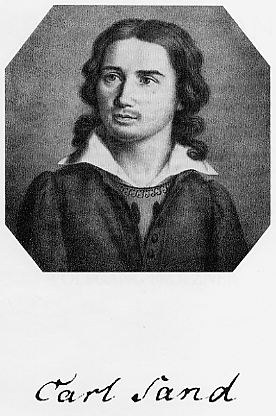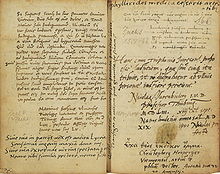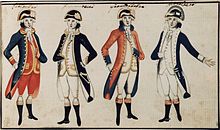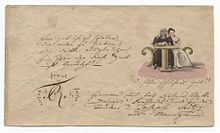
"De Brevitate Vitae", more commonly known as "Gaudeamus igitur" or just "Gaudeamus", is a popular academic commercium song in many European countries, mainly sung or performed at university graduation ceremonies. Despite its use as a formal graduation hymn, it is a jocular, light-hearted composition that pokes fun at university life. The song is thought to originate in a Latin manuscript from 1287. It is in the tradition of carpe diem with its exhortations to enjoy life. It was known as a beer-drinking song in many early universities and is the official song of many schools, colleges, universities, institutions, student societies and is the official anthem of the International University Sports Federation.

Karl Ludwig Sand was a German university student and member of a liberal Burschenschaft. He was executed in 1820 for the murder of the conservative dramatist August von Kotzebue the previous year in Mannheim. As a result of his execution, Sand became a martyr in the eyes of many German nationalists seeking the creation of a united German national state.

Karl Theodor Richard Lessing was a German Jewish philosopher.

An autograph book is a book for collecting the autographs of others. Traditionally they were exchanged among friends, colleagues, and classmates to fill with poems, drawings, personal messages, small pieces of verse, and other mementos. Their modern derivations include yearbooks, friendship books, and guest books. They were popular among university students from the 15th century until the mid-19th century, after which their popularity began to wane as they were gradually replaced by yearbooks.
Norbert Angermann is a German historian.

Bernhard Kellermann was a German author and poet.
Imanuel Geiss was a German historian.

Friedrich Stadler is an Austrian historian and philosopher and professor for history and philosophy of science at the University of Vienna. He is the founder and long-time director of the Institute Vienna Circle, which was established as a Department of the Faculty of Philosophy and Education of the Vienna University in May 2011. Currently he is a permanent fellow of this department and serves at the same time as the Director of the co-operating Vienna Circle Society, which is the continuation of the former Institute Vienna Circle as an extra-university institution.

Michael Matheus is a German historian.
Ulrich Schulte-Wülwer is a German art historian, specializing in north German painters of the 19th and 20th centuries.

Ursula Reutner is a German linguist. She holds the Chair of Romance Languages and Cultures at the University of Passau. Reutner is an internationally renowned expert in Romance Studies and Intercultural Communication, who has won several awards for her work, including the Prix Germaine de Staël, the Elise Richter Prize and an honorary doctorate from the Universidad del Salvador.

Walter Hinck was a German Germanist and writer. He was professor of German literature at the University of Cologne from 1964 to 1987.
Christoph-Hellmut Mahling was a German musicologist and lecturer at various universities.
Theodor Kroyer was a German musicologist.
Tamara Scheer is an Austrian historian. Scheer studied history at the University of Vienna and achieved her doctorate in 2006 at the same university. Since then she taught and worked at several institutions: from 2010 to 2012 Post-Doc-Head of the Doctoral School and ÖAD-Fellow at Andrássy University Budapest, FWF-Hertha-Firnberg-Fellow at Ludwig Boltzmann Institute for Historical Social Science (2013-2017). Short-Term Fellowships brought her to Trinity College Dublin (2014), Czech Academy of Sciences (2016) European University Institut Florence (2017/18), and the University of Oslo (2018).
Rudolf Bülck was a German librarian.
Michael Maaser is a German historian, archivist of the Goethe University Frankfurt.
Franz Schnabel was a German historian. He wrote about German history, particularly the "cultural crisis" of the 19th century in Germany as well as humanism after the end of the Third Reich. He opposed Nazism during the Second World War.
Matthias Asche is a German historian specialising in the early modern period.
Theodor Friedrich Wilhelm Willi Kahl was a German musicologist.



















